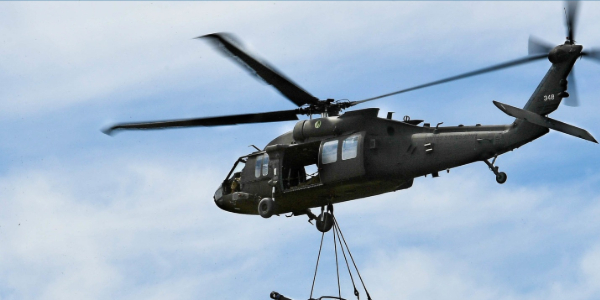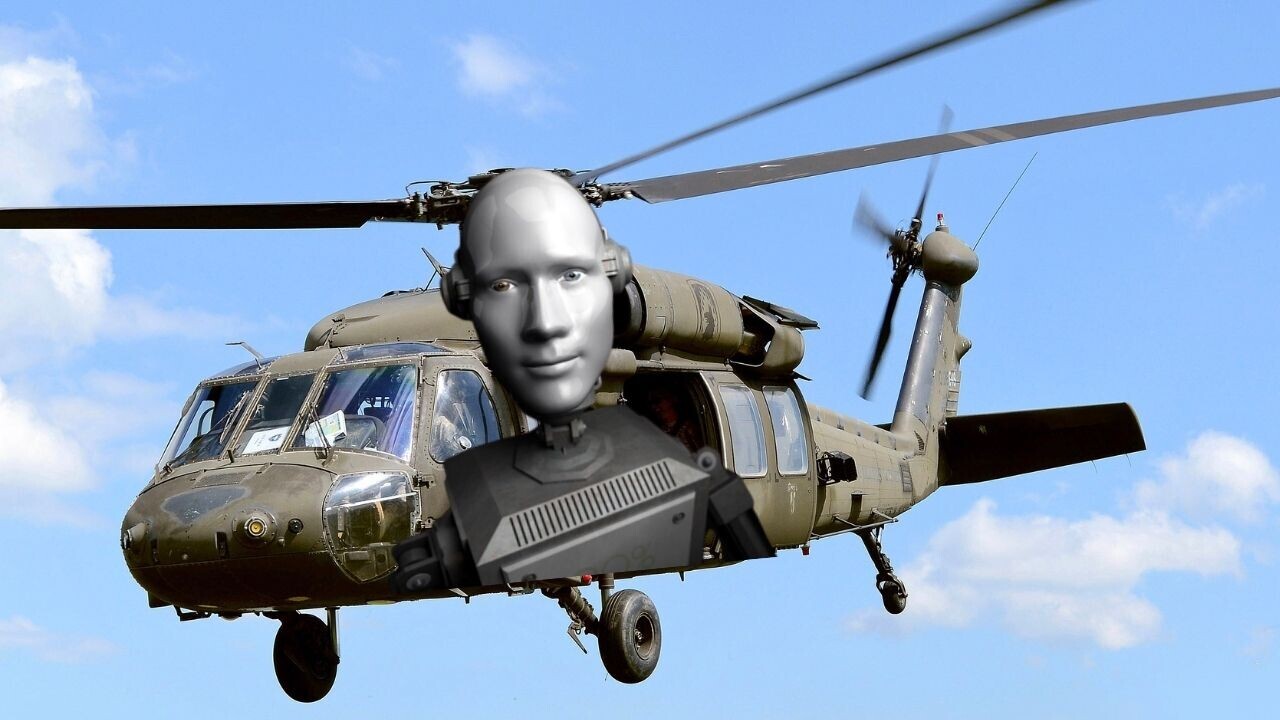Checking Out the Thrills and Innovations of the Blackhawk Helicopter
The Blackhawk helicopter stands as a testament to armed forces aviation's development, merging technical developments with sensible applications. What lies in advance for this legendary airplane, and how will emerging technologies form its future in military operations?
History of the Blackhawk Helicopter
Given that its beginning in the 1960s, the Blackhawk helicopter has played a critical duty in modern-day army air travel. Created by Sikorsky Airplane, the UH-60 Blackhawk was designed to fulfill the U.S. Army's requirement for a functional energy helicopter capable of carrying out a range of objectives, consisting of troop transport, clinical discharge, and cargo airlift. The style was an action to the limitations of earlier helicopters, particularly in terms of survivability, speed, and maneuverability.
The Blackhawk made its very first trip in 1974 and quickly got in solution in 1979. Its introduction noted a substantial innovation in helicopter modern technology, including a two-rotor system that boosted performance and stability. The airplane's sturdy building and construction and progressed avionics allowed it to operate effectively in varied environments and problems.
Throughout the years, the Blackhawk has been continuously updated, integrating lessons picked up from numerous battle circumstances. Its deployment in problems such as the Gulf War, Somalia, and the Battle on Fear further solidified its reputation as an essential asset. The Blackhawk's heritage is characterized by its versatility and resilience, making it a keystone of army air travel for decades.
Key Attributes and Specs
The Blackhawk helicopter is distinguished by its durable layout and advanced technical functions, which jointly improve its functional abilities. Designed largely for utility goals, the Blackhawk boasts a maximum launch weight of about 22,000 pounds, enabling it to carry significant hauls while maintaining dexterity.
Outfitted with 2 General Electric T700-GE-701C engines, the Blackhawk attains an optimal speed of around 183 knots and a series of 368 maritime miles - Blackhawk Helicopter. Its cutting edge blades system features a four-blade major rotor and a four-blade tail rotor, ensuring security and maneuverability in various flying conditions
The helicopter's cabin can suit as much as 11 soldiers or numerous freight configurations, showcasing convenience in mission profiles. Additionally, the Blackhawk is made with advanced avionics, consisting of electronic trip controls and a thorough cockpit display, enhancing pilot situational recognition.
For enhanced survivability, the Blackhawk includes ballistic shield and self-sealing fuel storage tanks. Its capacity to operate in diverse atmospheres, from deserts to icy surfaces, further solidifies its credibility as a dependable platform for humanitarian and military operations alike. The Blackhawk's mix of strength, convenience, and power makes it a cornerstone of modern airborne capabilities.
Improvements in Modern Technology
Developments in technology have actually dramatically boosted the capacities of the Blackhawk helicopter, guaranteeing it remains at the center of armed forces aeronautics. One of one of the most significant advancements is the assimilation of innovative avionics systems, which provide boosted situational awareness via real-time data processing and display screen. This innovation permits pilots to navigate complex settings much more successfully, enhancing goal success rates.

In addition, the introduction of electronic fly-by-wire systems has reinvented the control systems of the Blackhawk, offering smoother handling and raised he has a good point responsiveness. These systems help with innovative ability to move, necessary in high-stakes scenarios. Finally, advancements in communication and networking technologies allow smooth coordination amongst systems, boosting overall operational efficiency. Collectively, these technological developments make sure that the Blackhawk helicopter remains an important possession in contemporary armed forces procedures.
Functions in Military Operations
With sophisticated modern technology improving its capabilities, the Blackhawk helicopter plays a multifaceted duty in army procedures. Mainly, it is employed for army transportation, making it possible for rapid release and extraction of personnel in various battle scenarios. Its sizable cabin can suit up to 11 troops, making it a vital asset for unique procedures and massive missions.
Additionally, the Blackhawk works as a medevac platform, geared up to transfer damaged soldiers swiftly and efficiently from the battleground to clinical centers - Blackhawk Helicopter. Its convenience prolongs to logistical support, where it carries materials and equipment vital for sustaining army procedures in remote areas

The helicopter is also crucial in reconnaissance goals, offering aerial security and intelligence-gathering capabilities. Its capability to operate in diverse atmospheres-- ranging from city settings to extreme terrains-- further strengthens its importance on the battleground.
Additionally, the Blackhawk can be equipped with advanced weaponry, allowing it to engage in battle and supply close air support. This adaptability highlights the helicopter's important role in modern-day army approaches, making it a vital part of armed forces worldwide.
Future Advancements and Innovations
Improvements in innovation guarantee to usher in a new era for the Blackhawk helicopter, enhancing its capabilities and operational efficiency. As the armed forces landscape progresses, so as well does the emphasis on integrating sophisticated modern technologies right into rotary-wing airplane. Future advancements for the Blackhawk may consist of enhancements in avionics, such as sophisticated flight control systems and improved situational understanding devices powered by expert system. These innovations will facilitate more specific navigating and decision-making in intricate environments.
Moreover, the assimilation of unmanned systems is on the perspective, potentially allowing for manned-unmanned teaming procedures that can expand objective profiles and minimize threat to employees. The Blackhawk's design is likewise expected to integrate lighter and more powerful products, enhancing fuel efficiency and overall performance.

Verdict
To conclude, the Blackhawk helicopter stands for a considerable success in military air travel, defined by its flexibility and advanced technological attributes. Its historical evolution shows a continual reaction to operational needs, improving abilities in different duties such as army transport and medevac procedures. Recurring innovations, including the integration of expert system and hybrid-electric propulsion, assure to more strengthen the Blackhawk's efficiency and importance in future army involvements, guaranteeing its standing as an important asset on the field of battle.

With innovative technology boosting its abilities, the Blackhawk helicopter plays a complex role in military operations. (Blackhawk Helicopter)